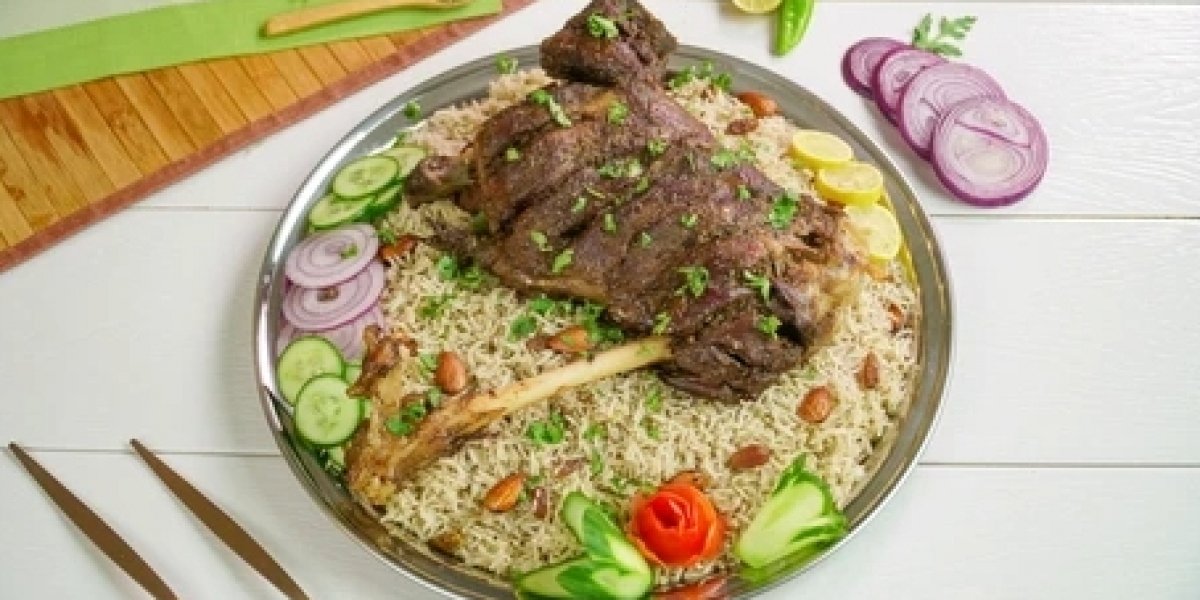The Growing Craving for Authentic Flavor
Walk through any busy street in Multan on a cool evening and you’ll notice a new kind of aroma filling the air. It’s warm, smoky, and spiced just right—the kind that makes passersby slow their steps. This growing love for mutton mandi in Multan isn’t just a trend; it’s a cultural shift.
For years, Multani families looked toward BBQ joints and traditional karahi spots for their meat fix. But lately, something different has been taking over dining tables—Mandi, the Yemeni-origin dish that blends Arabic culinary traditions with local hospitality. While many have heard of mandi through friends who traveled to the Gulf, not everyone has experienced its true form here at home.
Yet as demand grows, so does the problem: not every restaurant serves authentic mandi. Many places cut corners—using ordinary rice instead of long-grain basmati, overcooking the meat, or skipping the slow wood-fired method that gives mandi its depth. This has led to a mix of excitement and disappointment among food lovers searching for the real thing.
When Expectations Fall Short
Imagine this: A family plans a weekend dinner to try mandi for the first time. They’ve seen pictures online—huge platters, glistening meat, golden rice—and expectations are sky-high. But when the dish arrives, it’s lukewarm. The rice is plain, the meat lacks tenderness, and the overall experience feels rushed.
This isn’t rare. In fact, many locals have faced the same issue: they want the soul of Arabic cuisine, but they’re met with a compromise. As one regular diner put it, “Mandi ka maza tab hi aata hai jab gosht itna soft ho ke haath se alag ho jaye.”
When restaurants fail to meet these expectations, people either stop ordering mandi altogether or keep hopping from one place to another, hoping to find that one spot that “gets it right.” The result is frustration and missed opportunities for both families and businesses.
A Real Multani Family’s First Experience
To truly understand how powerful a good mandi experience can be, let’s look at a real example.
The Qureshi family, residents of Gulgasht Colony, had heard a lot about a newly opened mandi restaurant near Bosan Road. On a Friday evening, they decided to give it a try. The father, a banker by profession, was curious but skeptical. The kids were excited—they’d only seen mandi in YouTube vlogs from Riyadh.
The restaurant had set up traditional floor seating alongside regular tables, giving families the choice. The Qureshis chose the traditional style—mattresses and cushions around a large round platter. As the waiter carefully placed the steaming mandi before them, the entire family leaned in. The aroma hit first—smoky meat, subtly spiced rice, and that signature blend of cardamom and bay leaves.
The first bite changed everything. The meat fell off the bone effortlessly, the rice was fluffy and flavorful, and the accompanying chutney added just the right kick. The father, who had entered with cautious curiosity, simply nodded and said, “Yeh tou asli wali cheez hai.” The kids, grinning from ear to ear, dug in with their hands, enjoying the communal experience.
That night, the family didn’t just eat—they bonded over a shared discovery. Their story spread to friends and extended family, and soon, weekend dinners at that mandi spot became a regular thing.
Why Authenticity Matters
This case shows why authenticity isn’t just a culinary preference—it’s an emotional connector. When a restaurant takes the time to prepare mandi traditionally—slow-cooking the meat, layering spices properly, and respecting the dish’s heritage—diners notice.
A few key factors separate authentic mandi from imitations:
Slow Cooking Over Wood Fire: This infuses the meat with a deep, smoky flavor that gas stoves can’t replicate.
Layered Spices, Not Overpowering Heat: Traditional mandi relies on balance, not chili overload.
Quality Rice & Broth: The rice must absorb the meat’s juices to create that signature aroma and taste.
Communal Presentation: Serving mandi on a large platter isn’t just aesthetic—it’s part of the cultural experience of sharing.
These are the small yet powerful touches that turn a meal into a memory.
The Rise of Arabic Cuisine in Multan
Interestingly, this rise in mandi culture has also opened doors for Arabic mandi in Multan, bringing a richer variety of flavors to the city’s food scene. Many restaurants are now importing spices directly from the Gulf and hiring chefs trained in traditional techniques to preserve the authenticity of the dish.
Some spots even offer regional variants—Hadrami style with its subtle spices, or Saudi-style mandi with heavier meat broths. This diversity shows how Multan’s food landscape is evolving, blending Arabic tradition with local warmth. And for families like the Qureshis, it means more options to explore, more flavors to enjoy.
Solving the Authenticity Gap
The solution lies in a combination of education, effort, and experience. For diners, the key is to identify restaurants that respect mandi’s heritage rather than treating it like another fast-food item. For restaurateurs, it’s about understanding that in a city like Multan—where people value both flavor and family time—authenticity is a competitive advantage.
A good mandi restaurant doesn’t just serve food; it creates an atmosphere. From the seating to the aroma, from the plating to the final bite, every step should reflect care. When done right, the result is not just satisfied customers but loyal advocates who bring in new guests through word of mouth.
Expert Tips for a Perfect Mandi Experience
If you’re planning your first mandi outing with family or friends, here are a few tips to make it memorable:
Go in a group: Mandi is meant to be shared. The more people around the platter, the richer the experience.
Ask about the cooking method: Authentic places are proud of their techniques—they’ll tell you about their wood-fired ovens or special spices.
Try traditional seating: Sitting on floor cushions brings a unique cultural touch that tables can’t replicate.
Don’t rush: Mandi is best enjoyed slowly, in conversation and laughter.
A Cultural Bridge Through Food
What makes this rise in mandi culture so special is that it connects two worlds. On one hand, it preserves Arabic culinary heritage; on the other, it brings Multani families together around a shared table. It’s not just a dish—it’s a bridge between traditions, generations, and stories.
Taste the Real Thing
If you’ve ever felt disappointed by bland mandi, don’t give up just yet. Authentic spots are out there, slowly changing the food scene one platter at a time. Whether you’re craving the tenderness of slow-cooked mutton or the rich aroma of spiced rice, the real experience is closer than you think.
So gather your loved ones, pick a trusted spot, and let the flavors do the talking. Because once you’ve had a truly authentic mandi in Multan, there’s no going back.
Ready to discover authentic mandi flavors? Visit your nearest traditional mandi restaurant in Multan and experience the warmth, aroma, and community that only real mandi can bring. Bring your family, share a platter, and taste the difference yourself.








